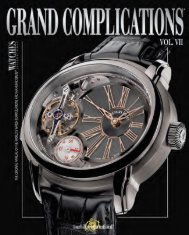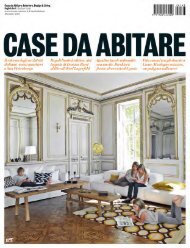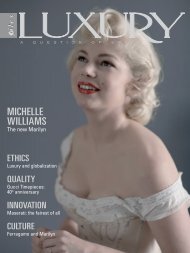THE ROUGH GUIDE to - Parallels Plesk Panel
THE ROUGH GUIDE to - Parallels Plesk Panel
THE ROUGH GUIDE to - Parallels Plesk Panel
You also want an ePaper? Increase the reach of your titles
YUMPU automatically turns print PDFs into web optimized ePapers that Google loves.
Dissent in Tian’anmen Square<br />
Though it was designed as a space for mass declarations of loyalty, Tian’anmen Square<br />
has as often been a venue for expressions of popular dissent. The first mass protests<br />
here occurred on May 4, 1919, when students gathered in the area <strong>to</strong> demonstrate<br />
against the disastrous terms of the Treaty of Versailles, under which the vic<strong>to</strong>rious Allies<br />
granted several former German concessions in China <strong>to</strong> the Japanese. The protests,<br />
and the movement they spawned, marked the beginning of the painful struggle for<br />
Chinese modernization. In 1925, the inhabitants of Beijing again occupied the square,<br />
<strong>to</strong> protest over the massacre in Shanghai of Chinese demonstra<strong>to</strong>rs by British troops.<br />
The following year, protesters angered at the weak government’s capitulation <strong>to</strong> the<br />
Japanese marched on government offices and were fired on by soldiers.<br />
The first time the square became the focus of outcry in the communist era was in<br />
1976, when thousands assembled here, without government approval, <strong>to</strong> voice their<br />
dissatisfaction with their leaders; in 1978 and 1979, large numbers came <strong>to</strong> discuss<br />
new ideas of democracy and artistic freedom, triggered by writings posted along<br />
“Democracy Wall” on the edge of the Forbidden City. People gathered again in 1986<br />
and 1987, demonstrating against the Party’s refusal <strong>to</strong> allow limited municipal elections<br />
<strong>to</strong> be held. But it was in 1989 that Tian’anmen Square became the venue for the largest<br />
expression of popular dissent in China in the twentieth century; from April <strong>to</strong> June of<br />
that year, nearly a million protesters demonstrated against the slow reform, lack of civil<br />
liberties and widespread corruption. The government, infuriated at being humiliated by<br />
their own people, declared martial law on May 20, and on June 4 the military moved<br />
in<strong>to</strong> the square. The ensuing killing was indiscriminate; tanks ran over tents and<br />
machine guns strafed the avenues. No one knows exactly how many demonstra<strong>to</strong>rs<br />
died in the massacre – probably thousands; hundreds were arrested afterwards and<br />
some remain in jail (though others have since joined the administration).<br />
These days the square is occasionally the venue for small protests by foreigners or<br />
members of the cultish, religious sect Falun Gong – hence the many closed-circuit<br />
TV cameras and large numbers of Public Security men, not all in uniform; look out,<br />
for example, for the plainclothes bruisers who stand either side of Tian’anmen’s Mao<br />
painting.<br />
As a transport hub, the square is easy <strong>to</strong> get <strong>to</strong>: Qianmen subway s<strong>to</strong>p is just<br />
south of the square, with Tian’anmen Xi and Tian’anmen Dong s<strong>to</strong>ps nearby <strong>to</strong><br />
the west and east respectively; you can also get here on buses #1, #4, #10, #22,<br />
#52 or #57.<br />
The Museum of Urban Planning<br />
The Museum of Urban Planning (, ; Tues–Sun<br />
9am–5pm; ¥30), just off Qianmen Dong Dajie, is little visited; for some reason,<br />
displays on solid waste management, air quality, and the eleventh five year plan<br />
have failed <strong>to</strong> galvanise the public. Staff are so bored they stand by the motionsensitive<br />
escala<strong>to</strong>rs and wave their hands <strong>to</strong> start the things for you. Still, the<br />
showcase is worth a poke around if you ignore the tedious displays on the first two<br />
floors. On the third floor you’ll find, on the wall, a fascinating bronze model<br />
showing the city as it used <strong>to</strong> look in imperial times, back when every significant<br />
building was part of an awesome, grand design. The star attraction, though, is an<br />
enormous and fantastically detailed underlit model of the city that takes up the<br />
entire <strong>to</strong>p floor. At a scale of 1m:1km it covers more than three hundred square<br />
metres, and illustrates what the place will look like once it’s finished being ripped<br />
up and redesigned by 2020 – with lots of office blocks and few hu<strong>to</strong>ngs.<br />
TIAN’ANMEN SQUARE AND <strong>THE</strong> FORBIDDEN CITY |<br />
Tian’anmen Square<br />
49

















